
zig – 1965 – styrofoam, motors.
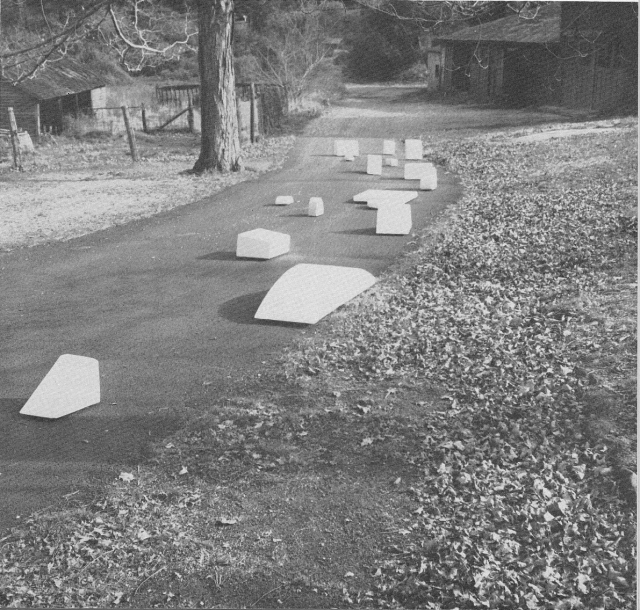

Above: Float. 1967.
Osaka-1, Expo '70
.jpg)

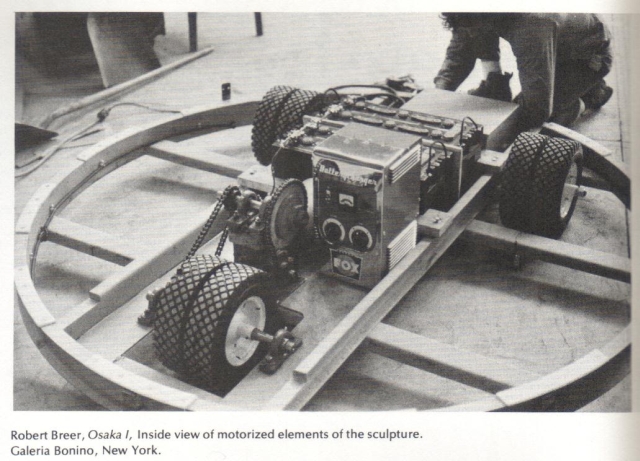
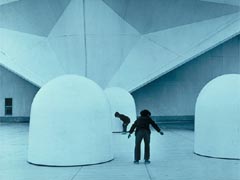
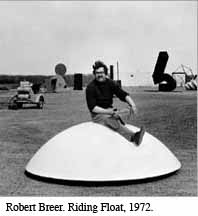
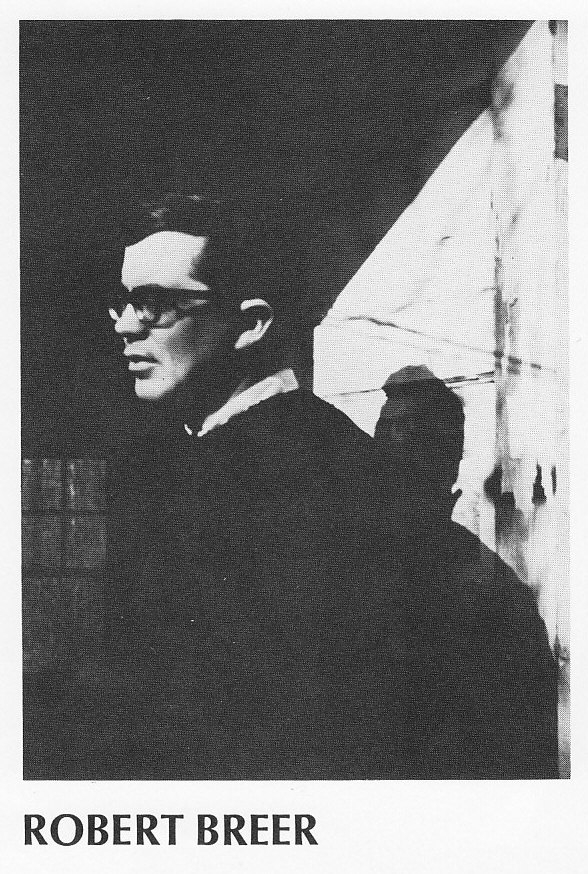
Robert Breer
Born in Detroit, 1926. 1949, after graduation from Stanford University (where he won the annual printing award), moved to Paris. Exhibited in group shows there at the Denise René Gallery from 1950 to 1955, and in 1955 participated in the Le Mouvement show with his films and flip-book Image par Images. In 1959 returned to the United States. One-man shows: Palais des Beaux-Arts, Brussels, 1956; American Student Center, Paris, 1956; Gallery Mayer, New York, 1960; Galeria Bonino, New York, 1965. Important group exhibitions: Bewogen Beweging, Amsterdam, Stockholm and Copenhagen, 1961; A New Vocabulary, Philadelphia, 1962; For Eyes and Ears, Gallery Cordier Ekstrom, New York, 1964; Fist Fight, film shown in performance of Karlheinz Stockhausen concert-happening Originals, Judson Hall, New York, 1964; Breathing, film selected for New York Film Festival, Lincoln Center, 1964; American Avant-garde Film Series, Gallery of Modern Art, New York, 1964.
4. Breer. Berkeley #1 (not shown). 1965. Styrofoam and metal, 3" x 24" x 48". Lent by the artist.
5. Breer. Berkeley #2 (not shown). 1965. Styrofoam and metal, 3" x 24" x 36". Lent by the artist. 6. Breer. Berkeley #3 (not shown). 1965. Styrofoam and metal, 3" x 24" x 48". Lent by the artist.
chapter 3
Where Is the Action?
SCULPTURES THAT RESPOND TO THE VIEWER
A large white dome moves slowly towards you. Touch it, and it mysteriously reverses its direction . This sculpture, Robert Breer's Osaka I, is six feet high and six feet in diameter. It is propelled by a motor which has a forward speed of eleven inches per minute. The sculpture automatically reverses direction when it makes contact with another object.
Robert Breer, Osaka I, 1970, fiber glass, steel chassis, 24 volts direct current motor. These sculptures were two of eight floats at the Art and Technology Pavilion, Expo 70, Osaka, Japan. Courtesy of the artist. (Photograph by Shunk-Kender)
From Directions in Kinetic Art. by Guy Brett.
Breer made his debut documentary on the sculptor Jean Tinguely in 1961, Homage to Tinguely. Screened at the Museum of Modern Art, it reflects Breer's interest in mechanical forms and the fine art of moving sculpture; techniques he used in his work, as his own kinetic sculpture was sparked by Tinguely's keen interest in mechanical gadgets, kinetic movement and abstract forms.
Breer was influenced by the new performance art and "happenings" making waves in the avant-garde of Europe and New York. He worked briefly with Claes Oldenburg and his performance pieces (1962). Breer also befriended artists like Nam June Paik, Charlotte Mormon and others exposed to the new trends in multimedia events.